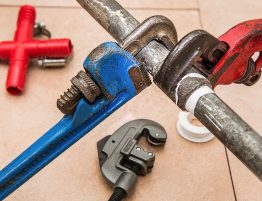
For more than a decade, the U.S. government Environmental Protection Agency (EPA) has worked to phase out the use of ozone-damaging refrigerants in air conditioners, heat pumps, and other appliances. Many of these types of chemicals, CFCs (chlorofluorocarbons), were phased out nearly 20 years ago, but HCFCs (hydrochlorofluorocarbons) stayed in production because they were “safer” to the ozone layer. We are now in the final stages of a phase-out process, though, that will virtually eliminate production of HCFCs by 2020, and EPA rules already require all new refrigeration equipment to use different chemicals that do not deplete the ozone layer.
But what does all this technical information mean for you when you need a new A/C (or heat pump), or call for service to your existing unit?
The Chemicals
Freon is the common name of the refrigerant traditionally used in air conditioners and other appliances. It is an HCFC also called R-22. This chemical is being phased out.
A different class of chemicals, HFCs (hydrofluorocarbons), are the recommended replacements for R-22. Most common in the U.S. is R-410A. In Europe, R-407C is another alternative. HFCs do not affect the ozone, but are found to still contribute to the problem of global warming, so it is still not a perfect solution.
Fix or Replace?
If you’re in the market for a new A/C installation, you don’t have a choice of refrigerants—Freon is no longer available in new air conditioning. But if your A/C or heat pump was made before 2010, it likely uses R-22 (Freon) refrigerant. So what do you do if you need an older unit repaired?
- Even though new units are no longer made to work with R-22, existing supplies of the chemical can be used to repair existing units.
- If your unit’s refrigerant level is down, there is likely a leak. If the leak can be readily repaired, then adding R-22 is probably the best choice (as long as there are no other equipment issues).
- If your old A/C requires a condenser replacement or any other major repair that requires draining and replacing refrigerant, it is possible to have it done and still use R-22. However, since production of R-22 is winding down, it has become quite expensive. Repair costs could be high enough to justify a new A/C unit that will also be more energy efficient.
- Some units can be modified to accept the new refrigerants, but the cost of the work may not be worth it compared to a new unit, especially if the existing unit is several years old.
- New refrigerants are considered safer for the environment but they are more difficult for technicians to work with. They are caustic and require special safety precautions and protective gear, so it may affect repair time and cost.
Most air conditioners last several years, so if you’re shopping now for a new unit or just beginning to make more regular service calls, EPA rules about refrigerants may be new to you. You don’t have to memorize all the numbers and letters involved, but you should know your options and how to make an educated decision on whether to repair or replace your A/C (or its refrigerant) once you receive an estimate from your service technician.
Highlights
- For minor repairs, or to “top off” refrigerant, R-22 (Freon) is still available
- For full replacement of refrigerant, R-22 is available, but if major parts need to be replaced (such as the condenser), a new A/C might be more economical
- Swapping refrigerant is an option, but, again, a new A/C might be more economical
- New units are not only friendlier to the environment but more energy efficient, and will save you on your electric bill over time (and some will earn you a tax credit)
Give us a call to have your air conditioner or heat pump inspected, to schedule a repair, or to shop for a replacement!







